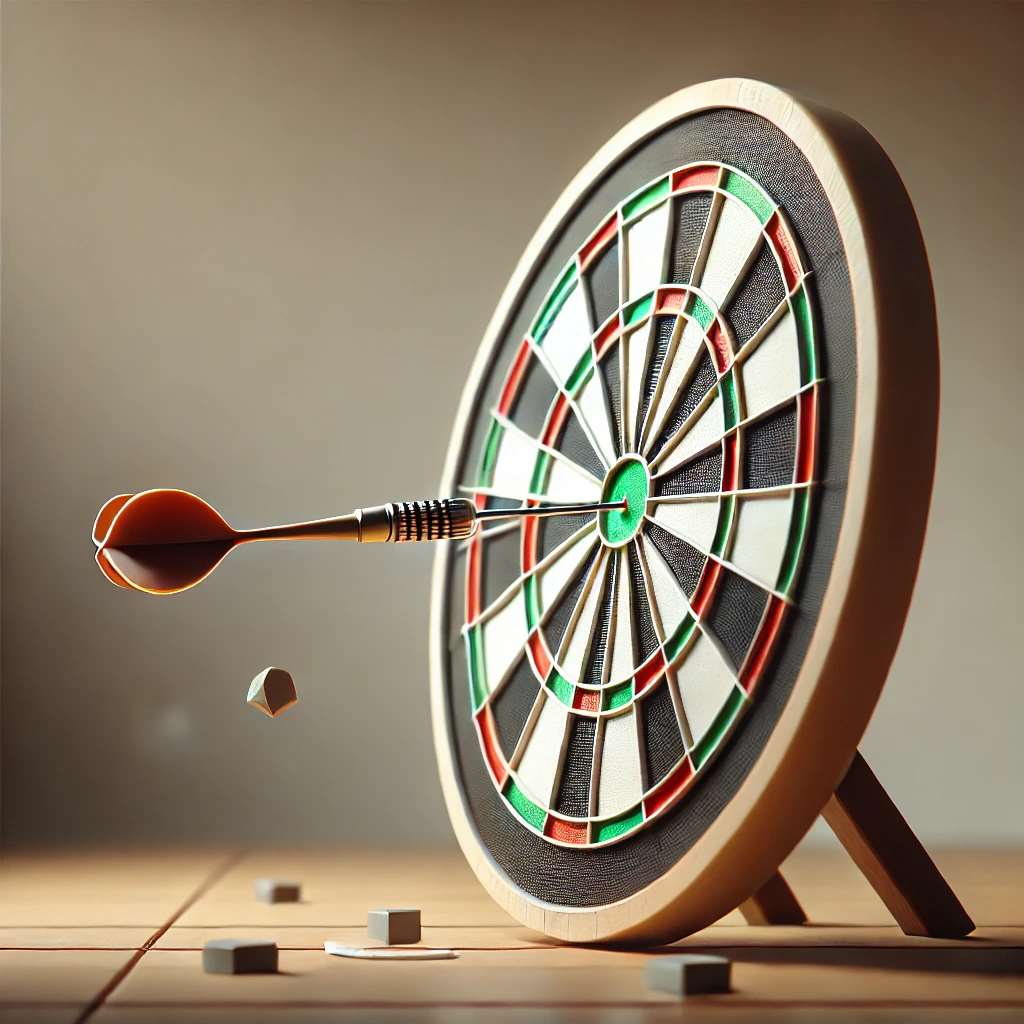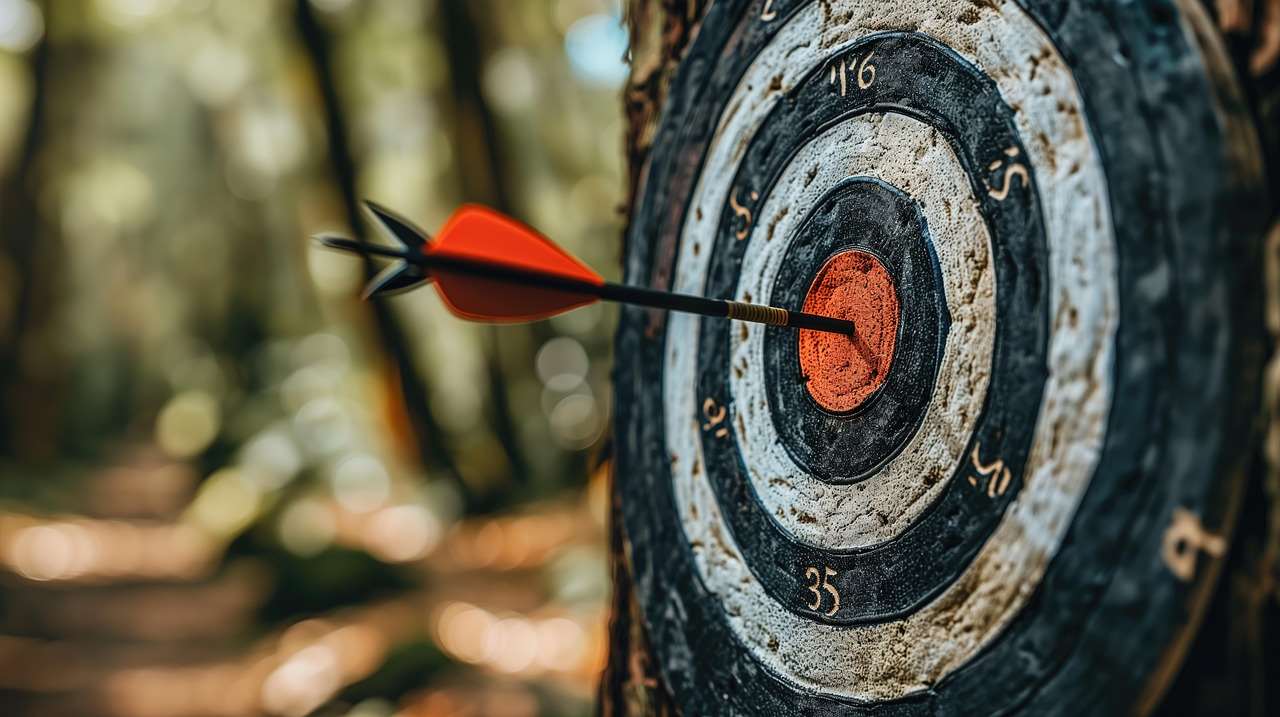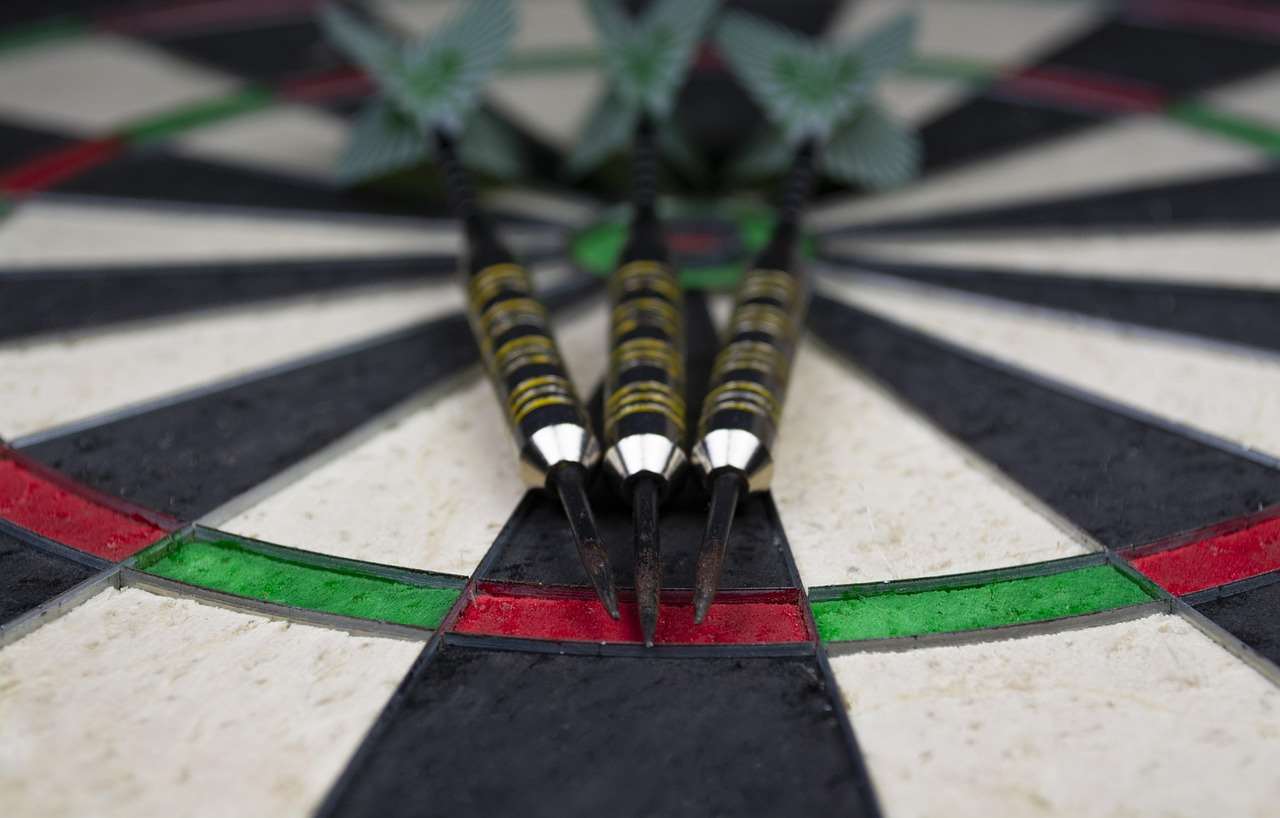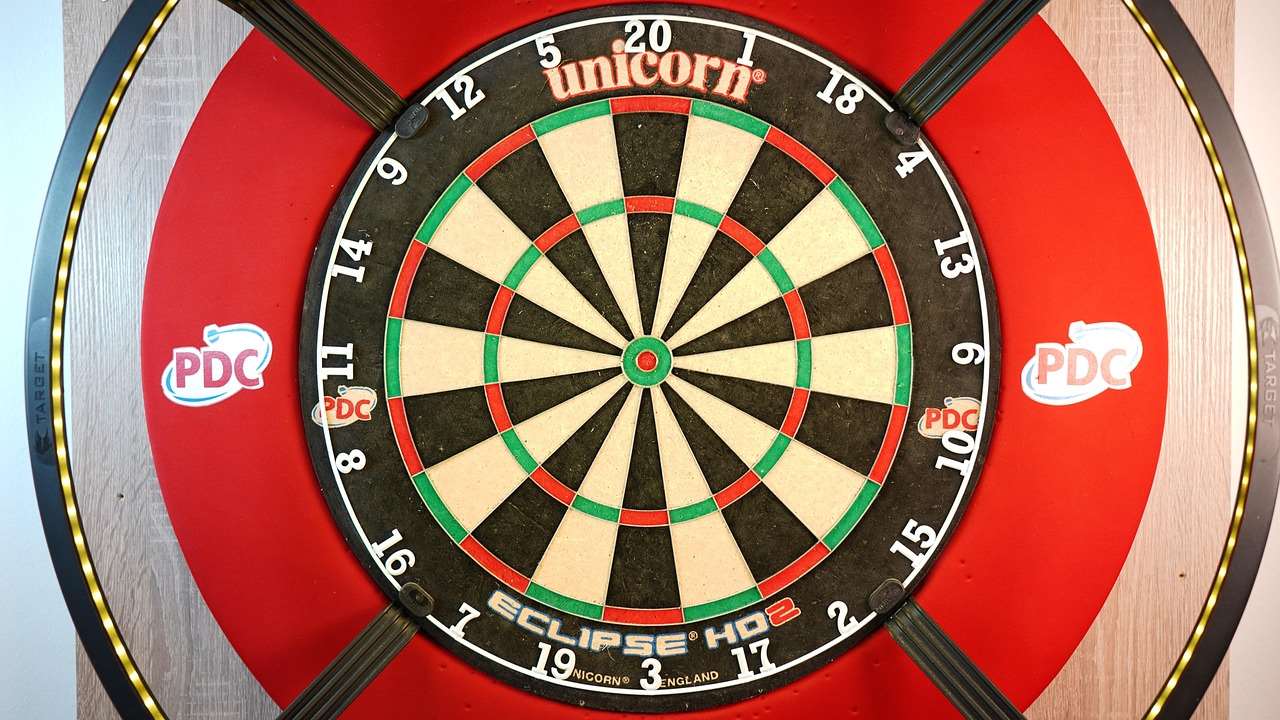Effectively, killer darts number assignment is the random or strategic allocation of numbers to players in the popular “Killer” darts game; it’s the foundation upon which the entire game is built, influencing player strategy and adding an element of chance. This article will delve into the various methods for assigning numbers, strategic considerations during assignment, and tips for maximizing your chances of survival (and victory!) in a game of Killer.
⚠️ Still Using Pen & Paper (Of een schoolbord)?! ⚠️
Stap in de toekomst! De Dart Teller -app behandelt alle scoren, stelt kassa voor, en volgt uw statistieken automatisch. It's easier than you think!
Probeer de Smart Dart Teller -app gratis!Klaar voor een upgrade? Klik hierboven!
Understanding Killer Darts and the Importance of Number Assignment
The Killer darts game is a thrilling variation that adds an element of elimination to traditional darts. Each player is assigned a number on the dartboard, and their objective is to “kill” their opponents by hitting their assigned number a specific number of times (usually twice) while protecting their own “life.” Correct killer darts number assignment is paramount; a favorable number can drastically improve your chances.
Choosing the right method for number assignment is crucial for a fair and enjoyable game. While random selection ensures impartiality, strategic assignment can create a more challenging and engaging experience. We will discuss both approaches in detail, exploring the pros and cons of each.

Methods for Killer Darts Number Assignment
There are several ways to handle the killer darts number assignment process, each offering a different balance of fairness and strategic opportunity. Here are some of the most common methods:
- Random Draw: Each player draws a number from a hat or deck of cards corresponding to the numbers on the dartboard. This method is completely random and ensures no player has an unfair advantage.
- Spin the Wheel: A wheel with numbers corresponding to the dartboard sections is spun, and the landing number is assigned to the player. This is another fair and engaging option.
- First Come, First Served: Players choose their numbers in order of sign-up or some other pre-determined order. This can be strategic, as players may vie for perceived “better” numbers.
- Auction: Players bid (using chips or points) on the numbers they want. This adds a layer of strategy and resource management to the game.
- Handicap-Based Assignment: Stronger players might be assigned numbers that are more difficult to hit consistently (Bijv., smaller targets or those frequently hit by others), while weaker players get easier numbers. This aims to level the playing field.
The choice of method depends on the group’s preferences and the desired level of competitiveness. For casual games, a random draw or spin the wheel is often preferred. For more serious play, a first-come-first-served or auction system can add an extra layer of intrigue.
The Strategic Considerations of Number Selection
If you have the opportunity to strategically select your number in killer darts number assignment, consider these factors:
- Target Size: Numbers with larger target areas (Bijv., 20, 19) are generally easier to hit consistently than those with smaller areas (Bijv., 11, 14).
- Proximity to Other Numbers: If you are prone to missing your target, consider choosing a number that is close to other numbers that you are comfortable hitting. This can minimize the damage from errant throws.
- Common Misses: Observe where other players tend to miss when aiming for specific numbers. Choosing a number adjacent to a common miss can inadvertently give you extra hits on your opponents.
- Psychological Impact: Some players have superstitions or preferences for certain numbers. Exploiting these psychological biases can give you a slight edge.
Herinneren, de “best” number is subjective and depends on your skill level, throwing style, and the specific dartboard being used.

Optimizing Your Strategy After Killer Darts Number Assignment
Once the killer darts number assignment is complete, it’s time to develop your in-game strategy. Your assigned number will heavily influence how you approach each round. Here’s how to make the most of it:
- Practice, Practice, Practice: Dedicate extra practice time to hitting your assigned number consistently. Focus on developing a smooth, repeatable throwing motion.
- Know Your Opponents: Pay close attention to your opponents’ throwing styles and weaknesses. Identify those who are likely to accidentally hit your number, and adjust your strategy accordingly.
- Prioritize Defense: Don’t get so caught up in eliminating other players that you neglect your own defense. Make sure to protect your “life” by consistently hitting your number.
- Strategic Targeting: Choose your targets carefully. Focus on eliminating players who pose the greatest threat or who are closest to eliminating you.
- Adapt and Adjust: Be prepared to change your strategy as the game evolves. If your initial plan isn’t working, don’t be afraid to try something new.
Remember to manage your risk. Sometimes, playing defensively and focusing on self-preservation is the best path to victory. It is not necessary to play Darts varianten leuke spellen at every turn. Choose the strategy that best suits your number and skill level.
Advanced Killer Darts Techniques
For experienced Killer darts players, mastering advanced techniques can provide a significant competitive advantage. These techniques require precision, strategic thinking, and a deep understanding of the game.
- De “Double Kill”: Hitting your number twice in a single turn to immediately eliminate an opponent. This requires exceptional accuracy and can be a game-changing move.
- De “Sacrifice Throw”: Intentionally missing your number to set up a more favorable throw in the next round. This requires careful planning and an understanding of your opponents’ likely reactions.
- De “Mind Game”: Using psychological tactics to distract or intimidate your opponents. This can involve trash-talking, strategic pausing, or simply maintaining a confident demeanor.
While these techniques can be effective, it’s important to use them judiciously and avoid crossing the line into unsportsmanlike conduct. The goal is to win, but not at the expense of fair play and good sportsmanship. You can explore more about the forgotten pub dart games to expand your range of darts knowledge.

Common Mistakes to Avoid After Killer Darts Number Assignment
Even with a solid strategy and good throwing skills, it’s easy to fall into common traps in Killer darts. Avoiding these mistakes can significantly improve your chances of success:
- Neglecting Practice: Failing to dedicate sufficient time to practicing your assigned number. Consistency is key in Killer darts, and practice is essential for developing that consistency.
- Underestimating Opponents: Assuming that weaker players pose no threat. Even less skilled players can get lucky, and it’s important to treat every opponent with respect.
- Ignoring Defense: Focusing solely on eliminating other players while neglecting your own defense. This can leave you vulnerable to a quick elimination.
- Chasing Losses: Trying to make up for missed throws by taking unnecessary risks. This often leads to even more mistakes and can quickly derail your game.
- Tilting: Becoming frustrated or angry after a bad throw or unfortunate event. Maintaining a calm and focused mindset is essential for playing your best.
By being aware of these common mistakes and actively working to avoid them, you can significantly improve your performance in Killer darts.
The Psychology of Killer Darts
Killer darts is not just a game of skill; it’s also a game of psychology. Understanding the psychological aspects of the game can give you a significant edge over your opponents, especially after the killer darts number assignment.
- Confidence: Believing in your ability to hit your number consistently is crucial. Maintain a positive attitude and visualize success before each throw.
- Focus: Eliminate distractions and concentrate on your target. Avoid letting your mind wander or getting caught up in external events.
- Composure: Stay calm and collected under pressure. Don’t let your emotions get the best of you, especially after a bad throw or a close call.
- Intimidation: Project an aura of confidence and competence to intimidate your opponents. This can involve making eye contact, maintaining good posture, and speaking with authority.
- Adaptability: Be prepared to adjust your strategy based on your opponents’ behavior and the overall dynamics of the game. Flexibility is key to success in Killer darts.
Mastering the psychological aspects of Killer darts can elevate your game to a new level. By cultivating confidence, focus, composure, intimidation, and adaptability, you can become a formidable opponent.

Variations on the Killer Darts Game
While the basic rules of Killer darts remain consistent, there are many variations that can add new layers of complexity and excitement to the game. These variations often involve modifications to the killer darts number assignment process or the rules for eliminating players.
- Double Trouble: Players must hit their number twice in a row to eliminate an opponent. This increases the difficulty and requires even greater accuracy.
- Three Lives: Players start with three “lives” instead of two. This extends the game and allows for more strategic play.
- The Assassin: One player is designated as the “Assassin” and has the power to eliminate any other player with a single hit, regardless of whether they have hit their number or not. This adds a high-stakes element of risk and reward.
- The Medic: One player is designated as the “Medic” and has the power to revive eliminated players by hitting their number. This creates a dynamic of alliances and betrayals.
Experimenting with different variations can keep the game fresh and engaging, and it can also help you develop new skills and strategies. It might be interesting to compare with old dart games rules to understand the evolution of this popular game.
Maintaining Sportsmanship in Killer Darts
While Killer darts can be a highly competitive game, it’s important to maintain good sportsmanship at all times. This includes following the rules, respecting your opponents, and avoiding any behavior that could be considered unfair or unsportsmanlike. The method for killer darts number assignment should always be transparent and agreed upon by all participants.
- Fair Play: Adhere to the established rules of the game and avoid any attempts to cheat or gain an unfair advantage.
- Respect: Treat your opponents with courtesy and respect, regardless of their skill level or playing style.
- Integrity: Be honest and truthful in your scoring and declarations.
- Grace: Accept both wins and losses with grace and humility. Congratulate your opponents on their successes and avoid making excuses for your own failures.
- Fun: Remember that the primary purpose of playing Killer darts is to have fun. Keep the game lighthearted and enjoyable for everyone involved.
By adhering to these principles of sportsmanship, you can ensure that Killer darts remains a positive and enjoyable experience for all participants.

Conclusie: Mastering the Art of Killer Darts
Killer darts is a dynamic and engaging game that combines skill, strategie, and psychology. From understanding the intricacies of killer darts number assignment to mastering advanced techniques and maintaining good sportsmanship, there’s always something new to learn and improve upon.
By implementing the tips and strategies outlined in this article, you can significantly increase your chances of success in Killer darts. Remember to practice consistently, adapt to your opponents’ playing styles, and maintain a positive and focused mindset. Most importantly, have fun and enjoy the thrill of the game!
Nu, grab your darts, gather your friends, and put your newfound knowledge to the test. It’s time to become a true Killer darts champion! Consider researching obscure dartboard games list for more exciting games to explore.
Hoi, Ik ben Dieter, En ik heb Dartcounter gemaakt (Dartcounterapp.com). Mijn motivatie was geen darts -expert - helemaal tegenovergestelde! Toen ik voor het eerst begon te spelen, Ik hield van het spel, maar vond het moeilijk en afleidend om nauwkeurige scores te houden en statistieken te volgen.
Ik dacht dat ik niet de enige kon zijn die hiermee worstelde. Dus, Ik besloot om een oplossing te bouwen: een eenvoudig te gebruiken applicatie die iedereen, Ongeacht hun ervaringsniveau, zou kunnen gebruiken om moeiteloos te scoren.
Mijn doel voor Dartcounter was eenvoudig: Laat de app de nummers afhandelen - het scoren, de gemiddelden, de statistieken, Zelfs checkout suggesties - zodat spelers puur kunnen richten op hun worp en genieten van het spel. Het begon als een manier om het probleem van mijn eigen beginners op te lossen, En ik ben heel blij dat het is uitgegroeid tot een nuttig hulpmiddel voor de bredere darts -community.